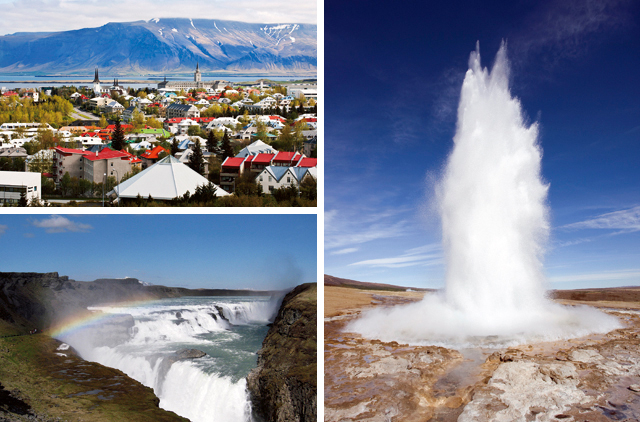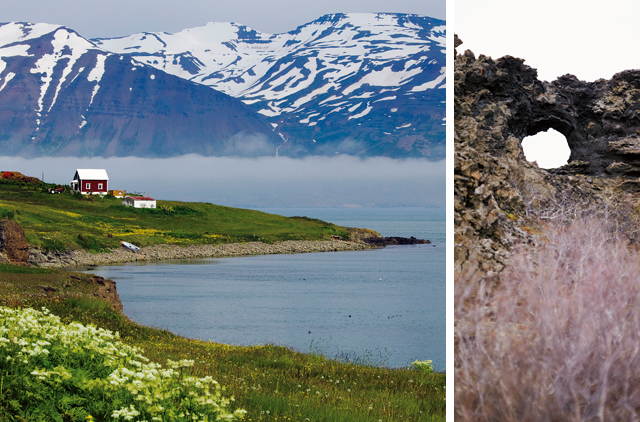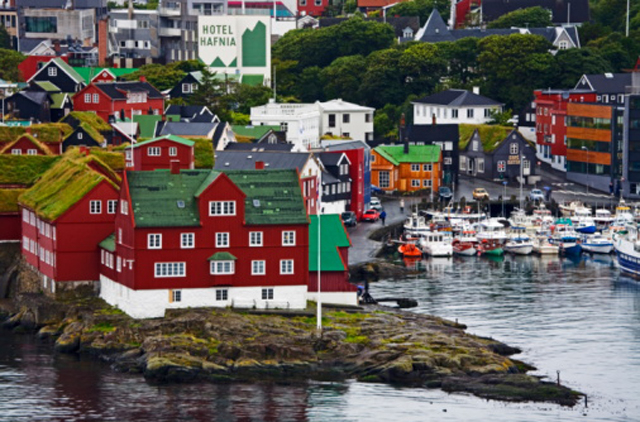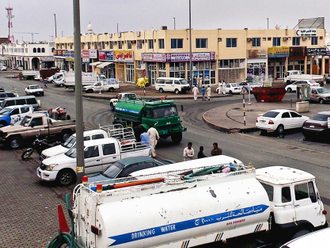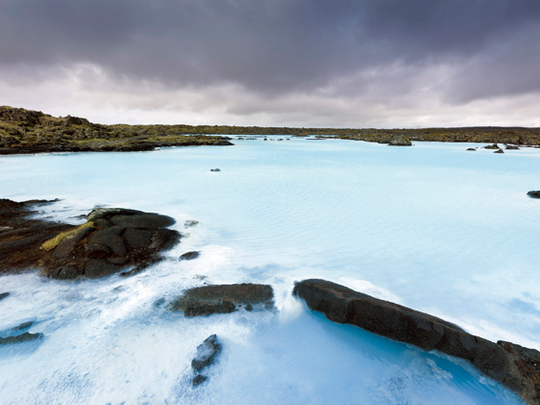
The Faroe Islands are not your usual holiday destination. An obscure archipelago located about halfway between Iceland and Norway, there’s little other than the blustery Norwegian Sea between them and the North Pole. I’d only ever heard of them as one of the mysterious names on the radio shipping forecast – an inhospitable-sounding place, constantly battered by force-8 gales with ‘visibility moderate to poor’. It certainly didn’t sound like somewhere I might actually
want to visit.
So it came as a surprise to discover that Borðoy, one of the 18 little islands (all but one of which are inhabited), was our third port of call on a cruise to Iceland and the Norwegian fjords. My camera-crazy husband had been hankering to visit Reykjavik with its hot spouting geysers and stunning Blue Lagoon ever since his son returned from the city a couple of years ago. So when an offer for an Icelandic cruise landed on my laptop, sailing out of Southampton in the UK on the Celebrity Eclipse, he needed little persuading to book a 14-night vacation in August.
As it was, even booking a month beforehand, we were almost too late to get on to the six-and-a-half-hour Gold Circle tour at our first stop in Reykjavik. We soon learnt why. In sparsely inhabited places, like Iceland, with three ships in the tiny port of Reykjavik all at once, and hundreds of sight-hungry day-trippers anxious to cram in every experience going, there can be problems.
Our first impression of Reykjavik from the ship was of a flat, green toyland. Once ashore, it’s amazing how empty the streets of Iceland’s capital city feel, even at rush hour on a working morning. We stopped first at The Pearl, one of the most recognisable landmarks in Reykjavik. The five immense hot water tanks that store water heated by natural springs, are topped by a domed revolving restaurant and an atrium with splendid views across a steaming landscape.
They may have cold winters, but even the poorest of Iceland’s 300,000 inhabitants need never worry about affording central heating or hot water in their homes. With geysers steaming along the roadside, it’s free. At Thingvellir National Park about 30 miles from Reykjavik, we visited the site of the world’s first democratic parliament, formed in 930AD. Today it’s bleak, rocky and there’s little left to see of its former glory, other than a lake and black volcanic rock covered in moss.
Boiling fountains
After paying homage, it was on to the geothermal fields at Geysir, a Martian–like grey and yellow landscape with sporadic springs of scalding water. The Strokkur geyser sprang to life, wafting a spray of steaming water that exploded 12 metres into the air like a boiling fountain before vanishing as suddenly as it began. Nature’s time clock sees these eruptions at Strokkur every eight to ten minutes. Others spring forth once every 18 to 80 years.
Another 30-minute drive along the road, and we reached the Gullfoss, the most famous of all Iceland’s waterfalls, located in the canyon of the Hvita River. One of the most popular tourist attractions in the country, we watched, awestruck, as the mighty river tumbled a graceful 29 metres to rejoin the river below.
Iceland is literally where Europe and the Americas meet. Beneath the Earth’s surface, two vast rocky plates – one the European plate, the other the American plate – are engaged in a constant battle. At Hafnarfjörður, we witnessed a new split in the surface of the land that appeared last February. Standing on either side, we had one foot geographically in North America and the other in Europe.
Then we reached the Blue Lagoon. It looked like a big steamy swimming pool, where hundreds of tourists were splashing noisily. With air temperatures struggling to reach 12°C under a drizzly grey sky, we huddled in raincoats trying to hide our disappointment. This wasn’t what we expected. But then wandering outside, we turned right – and there it was.
The scalding, aqua-blue pool of my step-son’s photographs, bubbling gently over black volcanic rocks, mineral-rich, salty deposits frilling the edges of the lagoon. It was breathtaking and worth the walk past the overpriced café and slightly tacky souvenirs.
A treeless territory
The next morning, our ship anchored in Akureyri. At first sight it looked like Switzerland with snowy peaks but without trees. Our five-and-a-half hour ‘Jewels of the North’ tour started at 8am. We travelled along mountain paths, nestled between rows of pine forests dotted neatly on the hillsides. Our guide explained that there is no natural forestation in Iceland and the trees have been planted by farmers to combat erosion as part of a national programme.
We went to a site called Dimmuborgir where we stopped for a closer look at a strange collection of vast volcanic rocks. Icelandic legend has it that the trolls, who fear sunlight, threw a party to cheer up a depressed friend. They celebrated too long, and failed to notice the sunrise that turned them to stone. We walked down a path to where the trolls Grýla and Leppalúði reputedly live, along with their sons, folklore’s 13 mischievous yuletide lads, who in recent times have come to be viewed as Father Christmas.
In this sparsely populated land, with its snow-capped mountains, magnificent waterfalls, rushing streams and doll’s house-pretty homes, any fairy tale sounds believable. Next stop was the Faroes. We berthed in the northernmost island, Borðoy, at Klaksvik, the second-largest town with 5,000 residents in this self-governing part of the Danish kingdom.
The capital of the Faroes, Tórshavn is the smallest in Europe with a population of 17,000. Our guide, mother-of-three Bara, was also a teacher and a dairy farmer’s wife. As we trundled through tunnels, she filled us in on Faroean life.
Summer light
There are only four sets of traffic lights here, no trains, no trees or natural forests and virtually no crime. The most social drink, we learn, is tea with milk. Almost two million sea birds use this place as their breeding ground, and the most prolific are puffins. Relaxed, unhurried and safe, children can play outside all night in summer without fear, while their parents practise their golf in preparation for the highlight of the island’s social calendar, the summer solstice midnight golf tournament.
Then it was on to Geiranger in Norway, sailing up the fjord past the exquisite Seven Sisters Waterfall. In Olden, we took a bus to Briksdalen Glacier and climbed right up to the glacier’s face. We dipped the tips of our fingers in the icy glacier pool, feeling the water as it melted from under the ice before it transforming into the mighty waterfall that sprinkled freezing droplets as we travelled beneath it to the coach park.
Next we picked up the Oslo-Bergen train. At Myrdal, we changed to the old Flamsbana Railway, which is the steepest railroad in Europe, and takes an hour to travel through its 20 tunnels along the 20 kilometres of track. At the Kjosfossen Waterfall the train stopped. We disembarked to be greeted by a sylph – an opera singer dressed all in red – dancing on a ledge of the mountain to music echoing from behind the gushing water.
Bergen was picture-book pretty. Visits to the fish market are a must, if only to see the ugly monkfish with its label. ‘Yes, I’m a Monkfish. Don’t ask,’ while music buffs can pay homage at Edvard Grieg’s home. On the two-day sail back to Southampton, there was time to ruminate on our voyage. We came with many expectations, some high (the Blue Lagoon) and some less so (the Faroes) but we were pleasantly surprised in every case. One thing’s for sure: the shipping forecast will never sound quite the same again.


